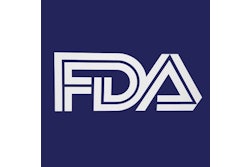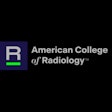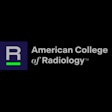If learning medicine is like learning a different language, then learning radiology is like learning an additional related language. A bit like learning Spanish and then having to learn Portuguese as well. Radiologists, therefore, have these three linguistic identities: normal language, medical lingo, and radiology-speak. Moreover, there is verbal radiology and there is dictated radiology. Radiologists subconsciously switch between these many times a day.
 Paul McCoubrie, MBBS.
Paul McCoubrie, MBBS.
When talking radiology for most of the day, it is easy to forget to switch modes when speaking to nonradiologists. It goes down particularly badly if you say to your spouse that “I’ll probably get home by six, but later arrival is not excluded.” Saying punctuation marks out loud is a hazard. Humans shouldn’t say the word “comma” out loud. Been there, done that. There is no coming back from that.
Similar to a new language, doctors learn an estimated 20,000 new words, around a 30% increase. Most professions have a specific lexicon, but doctors have to learn more than most. Twenty thousand words seems a little light for radiologists, given that there are approximately 4,000 named procedures, over 8,000 eponyms, and more than 30,000 named diagnoses. It is little wonder that many radiology reports are similar to Finnegan’s Wake by James Joyce; the words are broadly familiar, the order broadly conventional, but the meaning is often opaque.
For radiologists, pathologists, and surgeons, there are also over 7,000 terms in the international bible of anatomy, the "Terminologia Anatomica." Curiously, official nomenclature omits many day-to-day terms. Take the humble acetabulum (from the Latin for "vinegar cup" - I know, odd, eh?). It has one solo entry in the "Terminologia Anatomica," but radiologists commonly refer to the roof, the labrum, its columns, the fossa, both anterior and posterior margins, its notch, and, poetically, its teardrop.
There are vogues, fads, and fashions that come and go. You’d be looked at oddly if you started talking about a patient with bloody flux, dropsy, or ague. Some of these are lovely words; I like "podagra." Well, I like the word, but I can tell you from personal experience that the symptom is downright miserable. And, no, I don’t have Saturnine gout, before you ask. But then again, "saturnine" is a lovely prefix, invoking mysticism and Holst’s "The Planet Suite."
Unnecessary jargon
Doctors often overcomplicate matters by introducing unnecessary jargon. I think it is mainly to make the mundane or impolite sound relatively sophisticated. Hence, burping becomes eructation, a nosebleed becomes epistaxis, and goosebumps become horripilation. I find it occasionally amusing, but it fundamentally impedes communication. Excessive jargon is enough to induce spasm in the Levator Labii Superioris Alaque Nasi, mydriasis, diaphoresis, and trichotillomania.
I don’t know if this happens in other languages, but medics often abuse English adjectives. The severity or type of symptoms is often described with bizarre descriptions. For example, haemoptysis can be oddly "frank," psychosis is somehow "florid," and tenderness is "exquisite." Quite why these adjectives are thought appropriate, I don’t know. They certainly don’t translate -- frank tenderness, exquisite psychosis, and florid haemoptysis sound plain odd.
Other phrases are odd, too, when you stop and think. We talk of "deranged" liver function tests, whereas it’s normally a word reserved for an extreme mental state. We talk of lesions as being "aggressive" as if they were sentient and had deliberately chosen a path of violence. We talk of "fulminant" conditions, but this word actually derives from the Latin for "striking with lightning." And I’ve never understood allocating human emotions or conditions to symptoms or diseases. "Respiratory embarrassment" and "cervical incompetence" both sound like their respective organs should be blushing.
Speaking of the cervix, some medical phrases need to be changed as they are rooted in attitudes that are no longer appropriate. We’ve removed eponyms and textbooks named after war criminals, which is a start. But several terms in gynecology, for example, are felt to be rooted in misogyny. "Blighted ovum" isn’t exactly a pleasant phrase for someone desperate to conceive. Anembryonic pregnancy or empty sac are both better.
Ascribing emotions
Radiologists have a tendency to mangle medical English like no others. We call lesions "suspicious" or "worrisome," ascribing our emotions onto them as nouns. Ok, if we are doing that, why can’t we extend to label diseases with a wider range of emotions other than doubt or concern? Could a large central pulmonary embolus be described as "panicky"? Or a renal tumor with a volume doubling time of ten years be labelled as "boring"?
There are still many radiologists who are afraid of the word "normal." At last count, there were 28 different English euphemisms for this simple word. I don't have the time, space, or energy to have that debate right now, but these euphemisms should be used sparingly.
Imagine you are describing a face, genitalia, or some sexual characteristics. If I, for example, had breasts, would I be happy with them being labelled "unremarkable" by a radiologist? Or if my nether parts were described as "normal for age," would I take offence? I prefer superlatives when talking to patients. They never fail to smile on being told that their pancreas is "really quite beautiful."
The English language evolves, and so should I, apparently. But, dear reader, I’m not quite as tolerant as I should be. There are a few neologisms in medical English that grind my gears. It is a modern trend to deviate from long-established descriptions such as dyspnea, breathlessness, or hypoxia as something else. I can tolerate SOB (short of breath, not the other one). I’m happy with "low sats." But I cannot tolerate "new oxygen requirement." Do we describe thirst as "new fluid requirement"? Or tiredness as "new sleep requirement"? Or infection as "new antibiotic requirement"? No, we don’t.
Avoiding acronyms
I realize that I am increasingly a middle-aged man shouting at clouds, but I was always taught acronyms should be avoided in medical notes. There are known clinical risks to using them. I remember this as AAA: Always Avoid Acronyms. Anyway, there are some new ones on radiologist requests that baffled me.
BIBA = "brought in by ambulance." While interesting, the mode of patient transport has no relevance to me as a diagnostic radiologist.
NEWSing = an awful neologism, in which an acronym is treated as a verb. It basically describes someone deteriorating clinically (their National Early Warning Score has gone up, generally over three), but it is totally nonspecific and therefore useless to a radiologist. It is like writing “Ill ?cause”.
HFpEF = Heart Failure Preserved Ejection Fraction. Apparently a useful way to think about causes of heart failure, but I can’t help thinking that classifying a disease based on a normal test result is downright odd. Are we going to see LRTIpCXR (Chest infection; normal chest radiograph) or C?CnCTH (confusion of unknown cause but normal CT Head)?
I should stop now, otherwise I’ll be giving them ideas. But the principle still stands that doctors need to be kept in check, otherwise they invent increasingly bizarre language. And we radiologists should check our own practice: employing simplicity of phrase, eschewing arcane jargon, and ensuring our reports are not Joycean.
An unreadable report will remain unread. And an unread report is the most dangerous sort of report.
Paul McCoubrie, MBBS, is a consultant radiologist at Southmead Hospital in Bristol, U.K. Competing interests: None declared.
His new book -- "More Rules of Radiology" -- is available via its publisher, Springer, as well as local bookstores ( ISBN-13 978-3031640933).
The comments and observations expressed herein do not necessarily reflect the opinions of AuntMinnie.com, nor should they be construed as an endorsement or admonishment of any particular vendor, analyst, industry consultant, or consulting group.



















